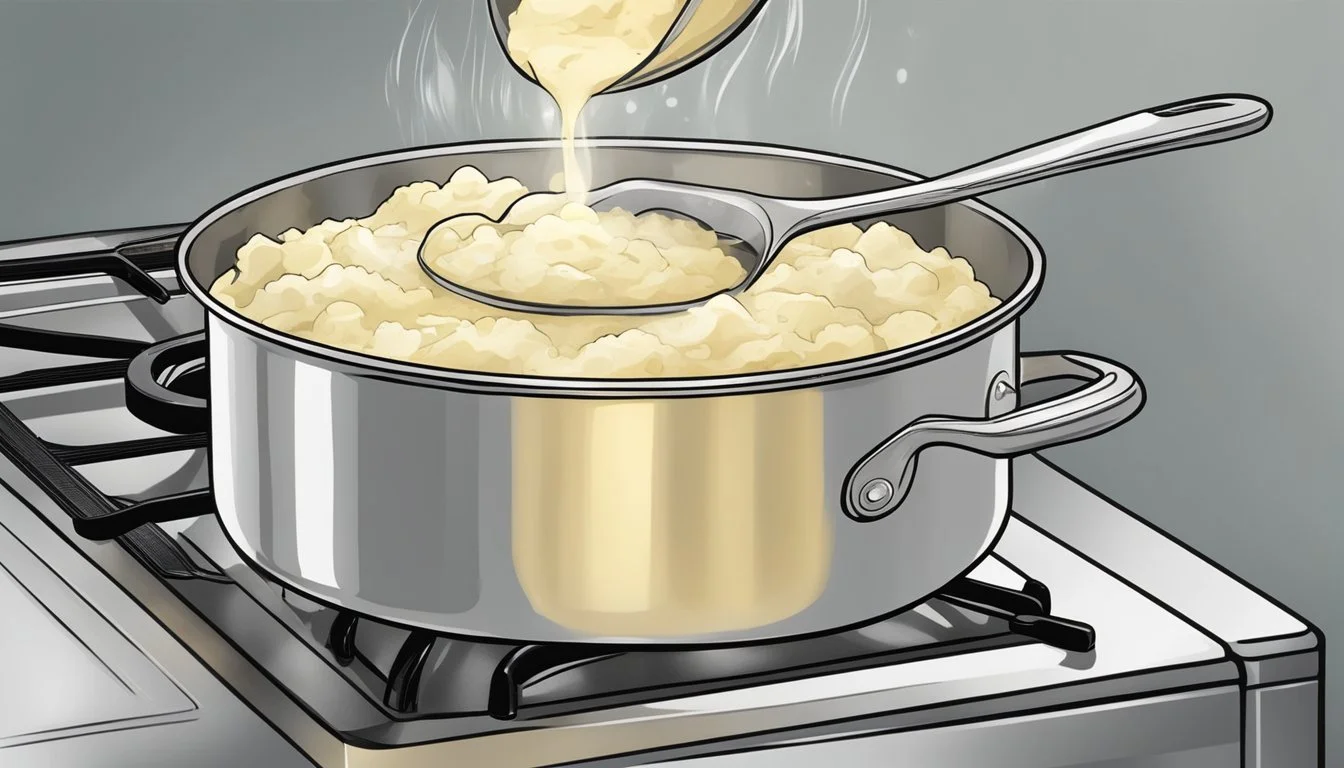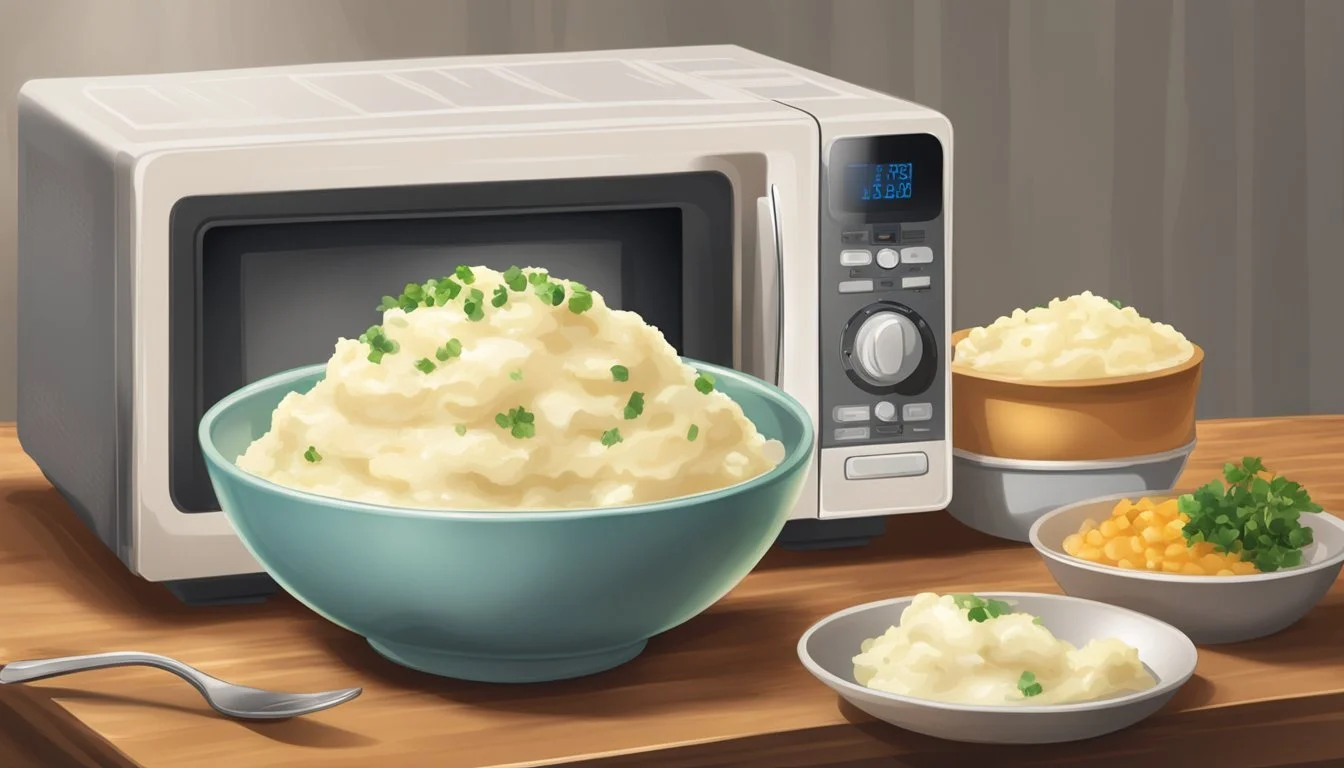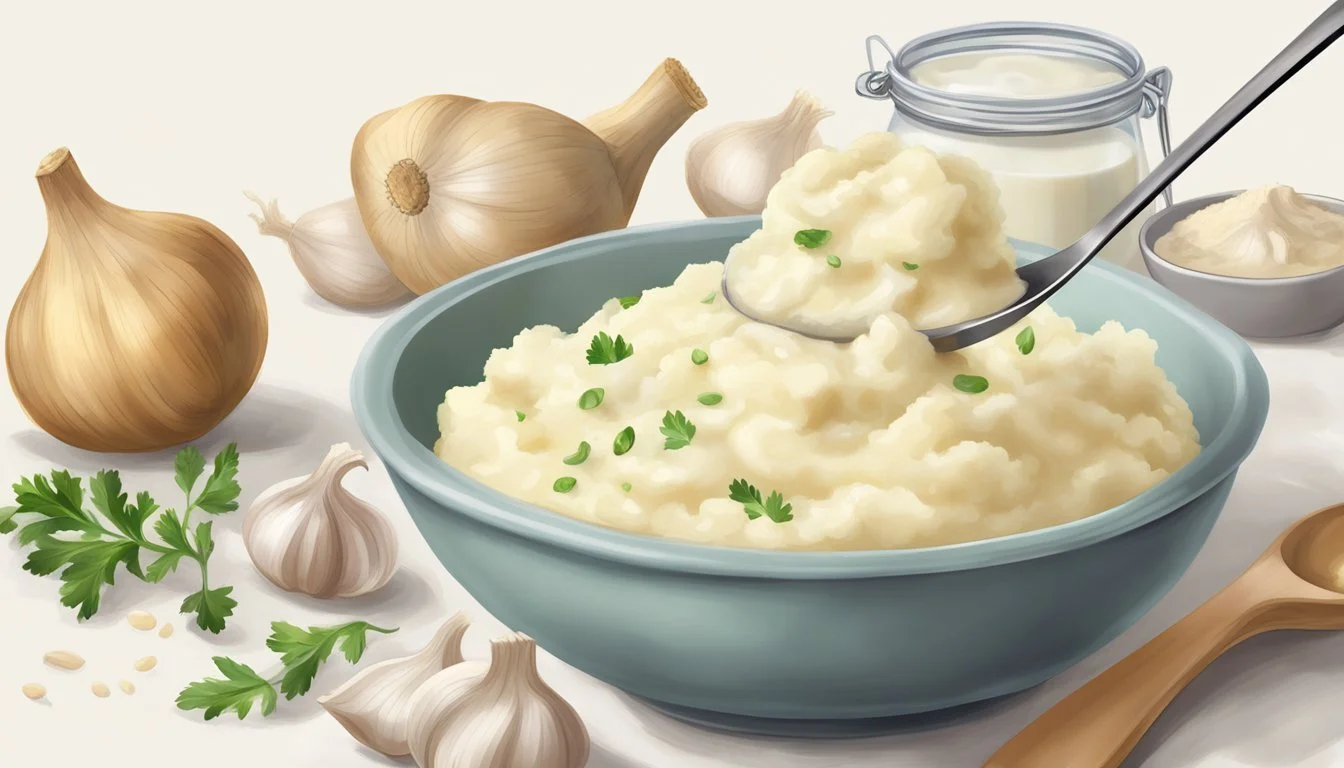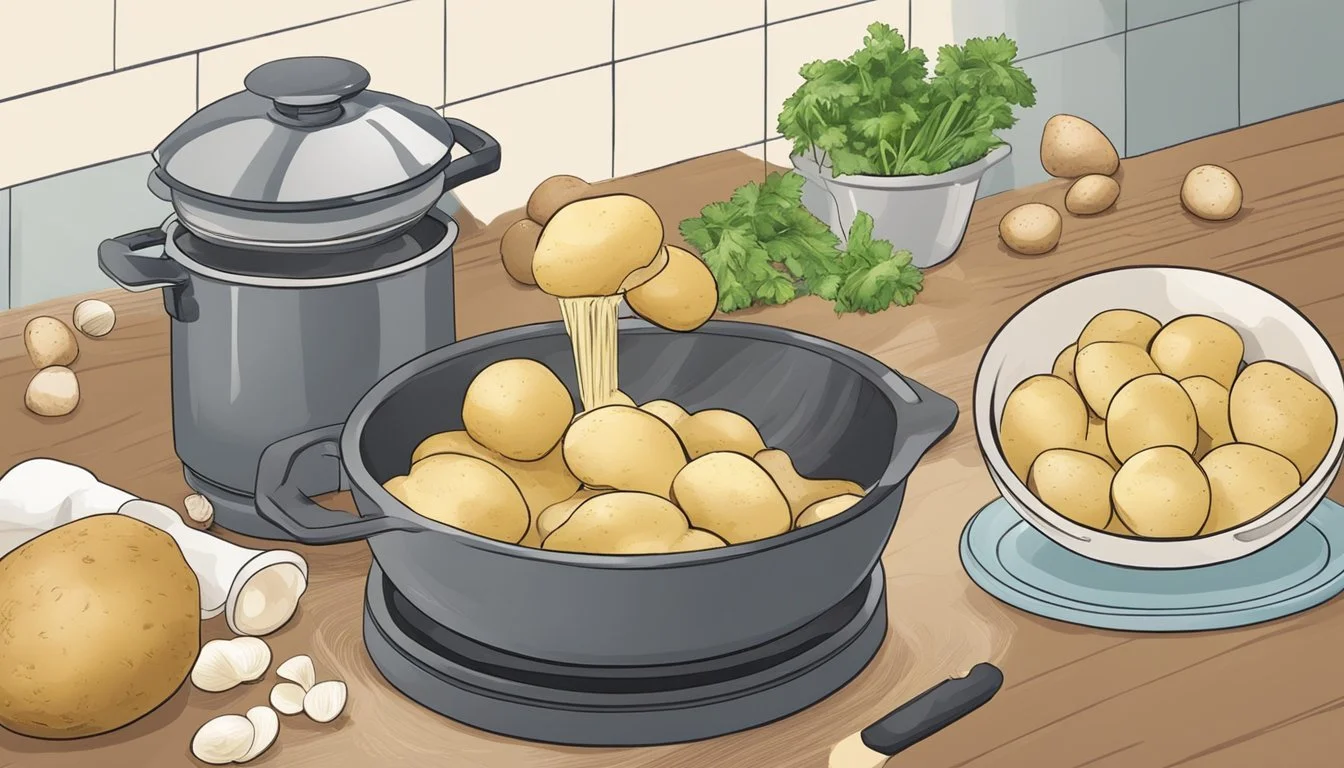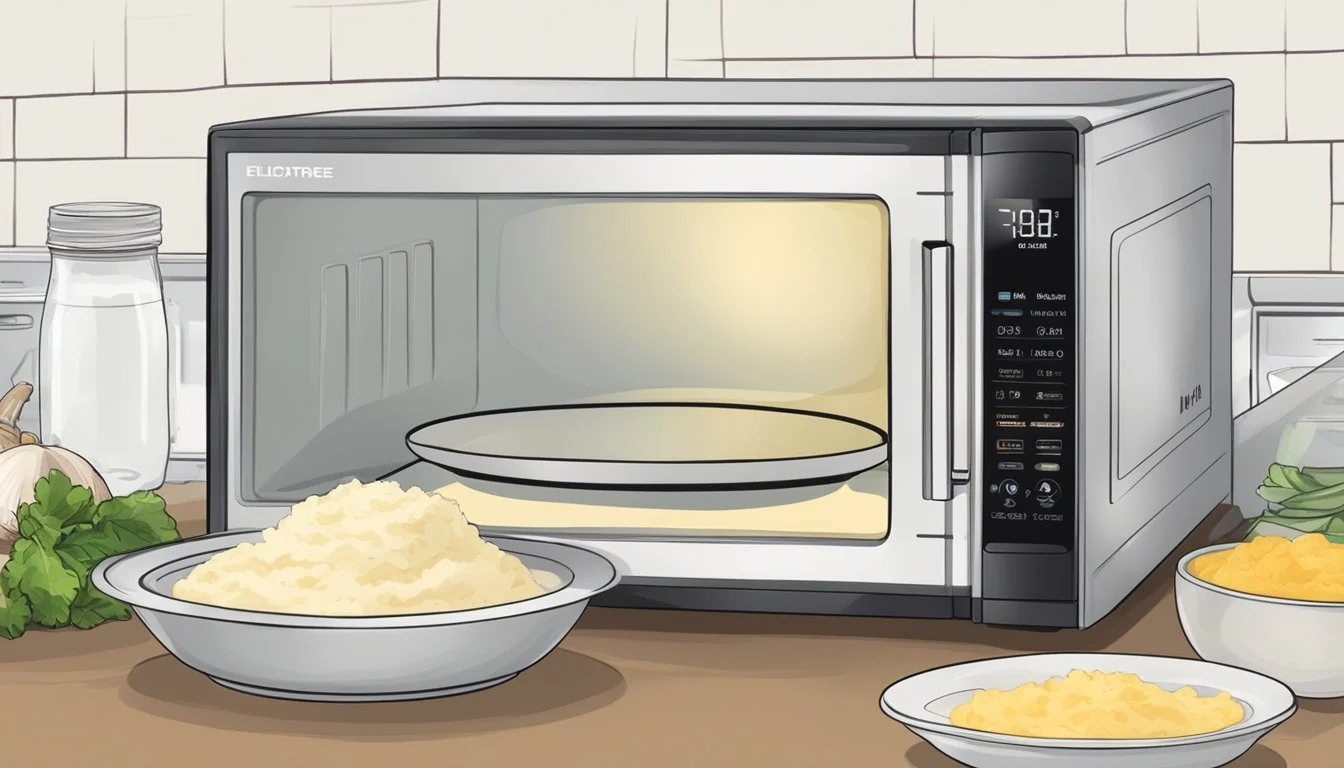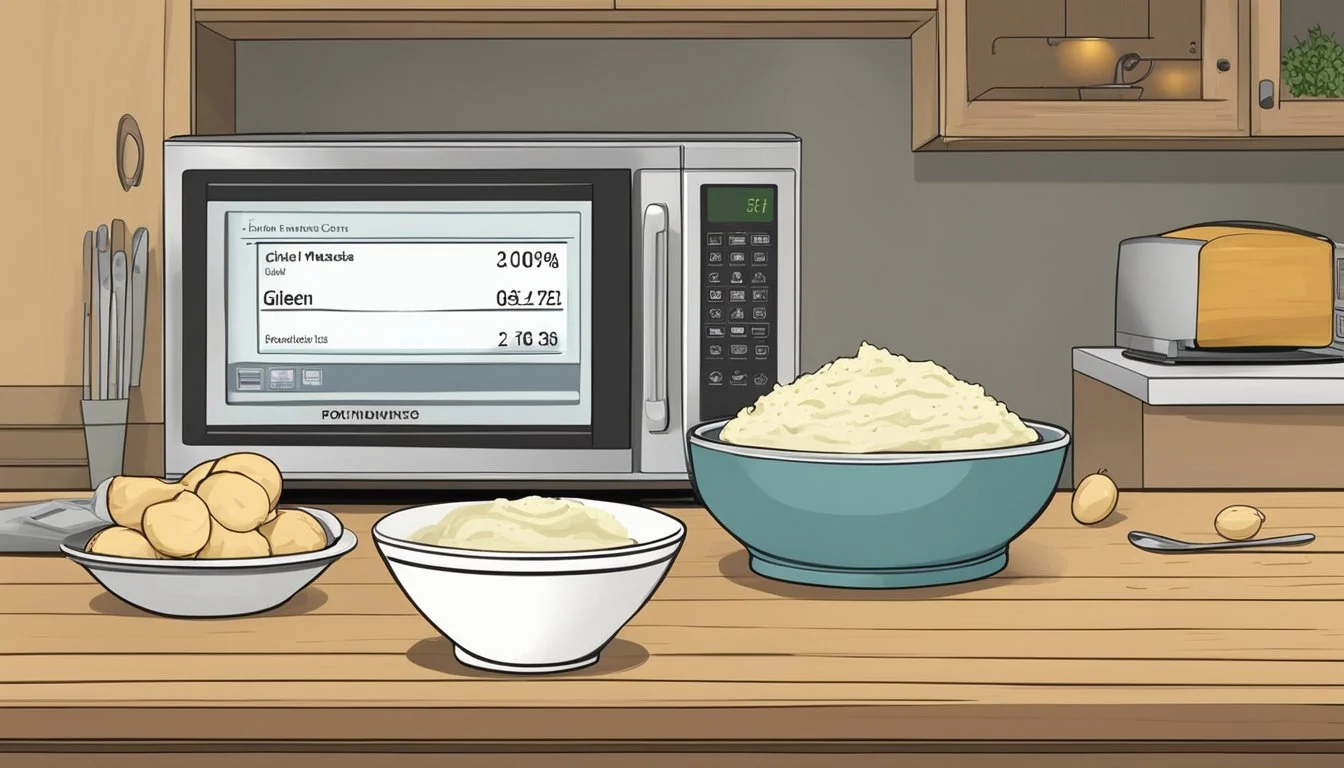How to Reheat Gluten-Free Garlic Mashed Potatoes
Expert Techniques and Tips
Ensuring that gluten-free garlic mashed potatoes maintain their creamy texture and delightful flavor when reheated can be a challenge. The tips shared in this post will allow your side dish to shine just as brightly the second time around. For perfectly reheated gluten-free garlic mashed potatoes, use a combination of gentle heat and added moisture.
Reheating mashed potatoes on the stovetop or in the microwave both have their benefits. Stovetop reheating allows for even heat distribution, while the microwave offers convenience. Regardless of the method chosen, adding a splash of dairy-free milk or a bit of extra butter can help maintain the creamy consistency that sets these mashed potatoes apart.
Whether served alongside holiday mains or a simple weeknight dinner, properly reheated gluten-free garlic mashed potatoes will ensure your guests enjoy every bite. Following these straightforward methods will not only save time but also deliver the same rich flavors that made the dish a hit initially.
Understanding Gluten-Free Mashed Potatoes
When making gluten-free mashed potatoes, the selection of ingredients and types of potatoes plays a crucial role in achieving the perfect texture and flavor. This guide focuses on choosing suitable potatoes and understanding the importance of gluten-free options.
Importance of Gluten-Free Options
Gluten-free dishes are essential for individuals with celiac disease or gluten sensitivity. Gluten-free mashed potatoes ensure that everyone at the table can enjoy traditional comfort foods without health risks.
Using gluten-free ingredients means avoiding any additives or cross-contamination that could introduce gluten. Potatoes are naturally gluten-free, making them an excellent base for a safe and delicious dish. Ensuring all added seasonings, butter, and milk alternatives are also gluten-free is equally important to maintain the dish's integrity.
Choosing the Right Potatoes
The choice of potatoes significantly impacts the texture and flavor of your gluten-free mashed potatoes. Russet potatoes are starchy and result in a fluffy, light texture. They mash easily and absorb flavors well, making them a popular choice.
On the other hand, Yukon Gold potatoes offer a creamier consistency due to their waxy texture. They have a naturally buttery flavor, which complements the garlic and other seasonings often added to mashed potatoes.
Whether choosing Russet or Yukon Gold, ensure the potatoes are fresh and of high quality for the best results. Each type of potato provides unique benefits, so personal preference and desired texture should guide your selection.
Essential Ingredients and Substitutes
When reheating gluten-free garlic mashed potatoes, paying careful attention to ingredient quality and suitable substitutes can ensure the dish remains delicious and fits dietary needs. Key elements include sourcing quality potatoes and exploring dairy and non-dairy options for ingredients like milk and butter.
Sourcing Quality Ingredients
Using high-quality potatoes like Yukon Gold or russets is crucial for creamy texture. These varieties become tender when boiled and mash easily. Choose firm potatoes with smooth, unblemished skin.
Fresh garlic is vital. Opt for plump, firm cloves without sprouting or soft spots for the best flavor. For a more convenient option, garlic powder can be used, but fresh garlic offers a superior taste.
Include salt to enhance flavors. Use fine sea salt or kosher salt for even seasoning distribution.
Dairy and Non-Dairy Alternatives
Traditional mashed potatoes typically use milk and butter. For dairy-free options, consider vegan butter for a creamy texture similar to regular butter. Brands like Earth Balance are popular choices.
Almond milk and coconut milk are excellent substitutes for regular milk. Almond milk has a mild flavor that blends well, while coconut milk adds a rich, slightly sweet taste. Both are effective for those seeking lactose-free alternatives.
Opt for dairy-free butter if avoiding dairy. It melts easily and combines smoothly with mashed potatoes, ensuring a similar consistency.
Utilize these substitutes to maintain flavor and texture while accommodating various dietary preferences. Prioritize quality ingredients to elevate the dish’s overall appeal.
Initial Preparation of Garlic Mashed Potatoes
When preparing garlic mashed potatoes, start by focusing on boiling the potatoes until they are just tender and then mashing them with garlic and other ingredients to achieve a creamy texture.
Basic Cooking Instructions
Begin by peeling and cutting the potatoes into even-sized cubes. This helps ensure they cook uniformly. Boil the diced potatoes in a large pot of salted water. The water should be brought to a boil before adding the potatoes. Boil them for about 15-20 minutes or until they are tender and easily pierced with a fork.
Once the potatoes are cooked, drain them thoroughly. For added flavor, return the potatoes to the pot over low heat to evaporate excess water. Add the garlic: either minced, roasted, or as garlic powder, depending on the flavor intensity desired.
Achieving Perfect Creaminess
To achieve a creamy consistency, add butter immediately after draining the potatoes so it melts evenly. For a rich, smooth texture, also add warm milk or a dairy-free alternative gradually. Mash the potatoes using a potato masher or a hand mixer at medium speed.
Ensure you mix the potatoes and liquids just enough to combine them thoroughly without making them overly starchy. Season with salt and pepper to taste. If desired, additional seasonings such as onion powder or chives can be incorporated to enhance the flavor profile.
This approach provides a perfect base for gluten-free garlic mashed potatoes, balancing texture and taste for an optimal side dish.
Proper Techniques for Reheating
When reheating gluten-free garlic mashed potatoes, maintaining their creamy texture is key. Whether using a microwave, oven, or stovetop, a few simple steps ensure the best results.
Microwave Method
The microwave is the quickest way to reheat leftover mashed potatoes. Transfer the mashed potatoes into a microwave-safe dish. Add a tablespoon of dairy-free milk or water per cup of potatoes to help retain moisture.
Cover the dish with a microwave-safe lid or plastic wrap, leaving a small vent. Heat on medium, stirring every minute, until they reach the desired temperature. This usually takes 2-5 minutes, depending on the quantity.
Ensure the potatoes are evenly reheated and creamy by mixing thoroughly before serving.
Oven Method
Reheating in the oven is ideal for larger quantities and helps retain a uniform texture. Set the oven to 350°F (175°C). Spread the mashed potatoes evenly in an oven-safe dish.
Stir in a small amount of dairy-free milk or broth to avoid drying out. Cover the dish with aluminum foil to keep the moisture in. Bake for 20-30 minutes, stirring halfway through.
Check the potatoes, ensuring they are heated thoroughly and are not drying out. Add more liquid if needed before finishing the reheating process.
Stovetop Method
The stovetop method offers great control over texture. Place the mashed potatoes in a medium saucepan or skillet over low heat. Add a tablespoon of dairy-free milk or broth per cup of potatoes to maintain creaminess.
Stir continuously to prevent sticking. This method may take 10-15 minutes, depending on the amount reheated. If the potatoes seem too thick, add more liquid in small increments while stirring.
Ensure the mashed potatoes heat evenly and remain smooth throughout the process. Adjust the seasoning if needed before serving.
Retaining Flavors and Textures
Reheating gluten-free garlic mashed potatoes while keeping them creamy and delicious requires certain techniques. Below are specific methods to maintain their creamy texture and enhance the garlic flavor.
Keeping Potatoes Creamy
To keep the mashed potatoes creamy, incorporate ingredients like butter and dairy (or dairy-free options). When reheating, add a small amount of milk or cream to the potatoes. This ensures they do not dry out.
Heat the potatoes on a low temperature, either in the oven or microwave, stirring occasionally to distribute the moisture. Adding a dollop of butter before reheating can help maintain the creamy consistency. Avoid high heat, as it can cause the potatoes to become dry and affect the texture.
Enhancing Garlic Flavor
Reheating can sometimes diminish the robust garlic flavor. To counter this, add a touch more garlic when reheating. Crushing fresh garlic and incorporating it into the warm potatoes can intensify the garlic taste.
Another method is to sauté minced garlic in butter until fragrant and then mix it into the reheated potatoes. This not only boosts garlic flavor but also adds depth. Adding fresh chives after reheating can provide a fresh and sharp contrast to the creamy and garlicky potatoes.
Serving and Pairing Suggestions
Reheated gluten-free garlic mashed potatoes can shine alongside a variety of dishes and benefit from thoughtful garnishes and additions. This section provides guidance on pairing these potatoes with main meals and enhancing them with extra touches.
Complementing Main Dishes
Gluten-free garlic mashed potatoes make an excellent side dish for many main meals. Roasted or grilled chicken pairs wonderfully, creating a hearty and balanced meal. Turkey and gravy are classic choices, particularly for Thanksgiving or holiday celebrations.
Grilled meats such as steaks, pork chops, or lamb provide a rich contrast to the creamy texture of the potatoes. Meatloaf also stands out as a comforting combination, ideal for family dinners. For a lighter option, consider serving the mashed potatoes with grilled or roasted vegetables to keep the meal wholesome.
Adding Garnishes and Extras
Elevate your gluten-free garlic mashed potatoes with garnishes that add flavor and visual appeal. Chives or parsley offer a fresh, bright contrast. Roasted garlic can amplify the existing garlic flavors, while a dollop of sour cream adds richness.
For a dairy-fee option, consider dairy-free butter or olive oil for an equally creamy finish. Crumbled bacon or shredded cheese provide a savory touch. Seasoning with salt and pepper should be adapted to taste, ensuring the potatoes have enough punch to stand up to the mains they accompany. These additions ensure that reheated mashed potatoes taste as delectable as when they were first made.
Storing for Future Use
Proper storage of gluten-free garlic mashed potatoes ensures they remain fresh and retain their delightful flavor for future meals. Whether using the refrigerator or freezer, following these guidelines will help maintain their quality.
Refrigeration Best Practices
To store gluten-free garlic mashed potatoes in the refrigerator, use an airtight container to prevent moisture and odors from affecting the dish. Mashed potatoes can be kept in the refrigerator for up to three days.
Ensure the mashed potatoes are cooled completely before refrigeration. This helps prevent condensation inside the container, which can lead to watery potatoes. If the mashed potatoes are part of a larger meal preparation, label the container with the date to keep track of freshness.
For best results, reheat in a microwave or on the stove. Microwaving requires stirring every two minutes to ensure even heating. For stovetop reheating, use low heat and a small amount of milk or butter to prevent drying out.
Freezing and Thawing Techniques
Freezing is a great method for extending the shelf life of gluten-free garlic mashed potatoes. Begin by spreading the mashed potatoes in a single layer on a baking sheet and freezing until firm. Once frozen, transfer them to a freezer-safe bag or container.
To thaw, place the container in the refrigerator overnight. This gradual thawing helps retain the creamy texture. For faster thawing, use the defrost setting on a microwave, but follow with traditional reheating to ensure even warming.
When reheating, add a bit of butter or broth to bring back the optimal creamy consistency. This method works well for maintaining the original taste and texture of the mashed potatoes.
Nutritional Profile
Gluten-free garlic mashed potatoes offer a blend of essential nutrients and health benefits. They provide a boost of vitamins and minerals while also fitting into various dietary restrictions.
Health Benefits
Garlic mashed potatoes are rich in potassium, essential for maintaining healthy blood pressure levels. A medium serving provides about 20% of the daily recommended intake. They also contain vitamin C, which supports the immune system and skin health, contributing approximately 10% per serving.
Additionally, these mashed potatoes are a good source of fiber, aiding digestion. Fiber intake varies depending on the amount and type of potatoes used, but it usually ranges around 2-3 grams per serving. This dish is also low in saturated fat and cholesterol when prepared with minimal butter or dairy substitutes.
Dietary Considerations
People with gluten intolerance or celiac disease can enjoy this dish with peace of mind, as it is naturally gluten-free. For those managing sodium intake, using unsalted butter or low-sodium substitutes can reduce the sodium levels in the recipe.
Calories in a serving can vary but generally range between 100 to 150 calories, influenced by ingredients like butter, milk, or any dairy-free alternatives used. For those looking at carbohydrates, a standard serving provides about 20-30 grams, essential for quick energy.
Protein content is relatively low, typically around 2-3 grams per serving, so pairing the dish with protein-rich foods can balance the meal. Iron and calcium are also present in small amounts, thus contributing to overall nutritional needs without being overly significant.
By using dairy-free or reduced-fat ingredients, the dish becomes suitable for those monitoring their saturated fat and cholesterol intake, ensuring a heart-healthy diet option.
Additional Tips and Variations
Experimenting with different flavors and textures can elevate your reheated gluten-free garlic mashed potatoes. These ideas will add excitement and variety to your dish, perfect for any meal.
Creative Seasoning Ideas
Spice up your mashed potatoes with creative seasoning ideas. Fresh herbs such as rosemary and thyme add an aromatic depth. Chives provide a mild onion-like flavor that complements garlic perfectly. Use cracked black pepper for a touch of heat.
Consider incorporating different spices like smoked paprika for a smoky flavor or a hint of nutmeg for warmth. Grated cheese, such as Parmesan or cheddar, can add richness. Stir in a dollop of sour cream for extra tanginess and creaminess. These changes can transform your mashed potatoes into a new experience each time.
Incorporating Different Textures
Adding various textures can make reheated mashed potatoes more interesting. For a crunchy element, sprinkle crispy bacon bits or toasted breadcrumbs as a garnish. Sautéed or caramelized onions can add a sweet and savory contrast.
Mixing in some chopped vegetables like roasted bell peppers or mushrooms can add layers of texture and flavor. If you prefer a creamier consistency, try adding more dairy-free butter or a splash of milk while reheating. Adjust the amount based on how smooth you want the potatoes to be. Keep exploring combinations until you find your favorite.
Leveraging Social Proof
Leveraging social proof can significantly enhance the credibility of your gluten-free garlic mashed potatoes recipe. It involves sharing results on social media and engaging with community feedback to build trust and visibility.
Sharing Results on Social Media
Sharing results on platforms like Pinterest and Instagram can drive engagement and validate the success of your recipe. Post appealing images of your reheated mashed potatoes, ideally in a well-lit setting. Accompany the images with a descriptive caption, detailing the reheating process and the resulting texture and flavor.
Consider including user-generated content, such as reposting reviews or photos from family or followers who have tried the recipe. Highlighting a star rating and positive comments can further persuade new users to try the recipe. Use relevant hashtags to reach a broader audience and encourage users to share their own experiences.
Engaging with Community Feedback
Actively engaging with feedback fosters a community around your recipe. Monitor comments on your social media posts and respond to inquiries or compliments. Encourage users to leave feedback, whether through star ratings or detailed comments.
Address constructive criticism professionally and offer tips for achieving better results. For example, if someone mentions the mashed potatoes were too dry, suggest adjusting the amount of milk during reheating. Creating a dialogue not only improves the recipe but also strengthens trust with your audience.

